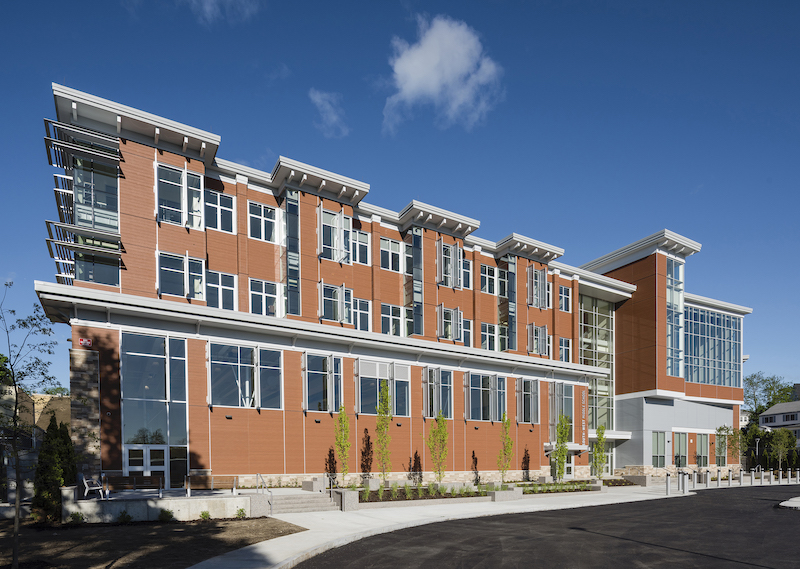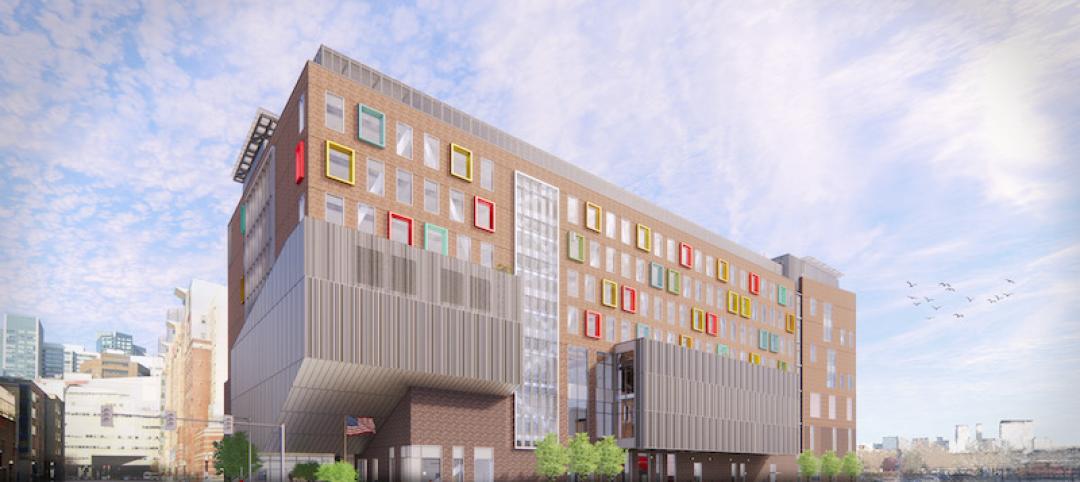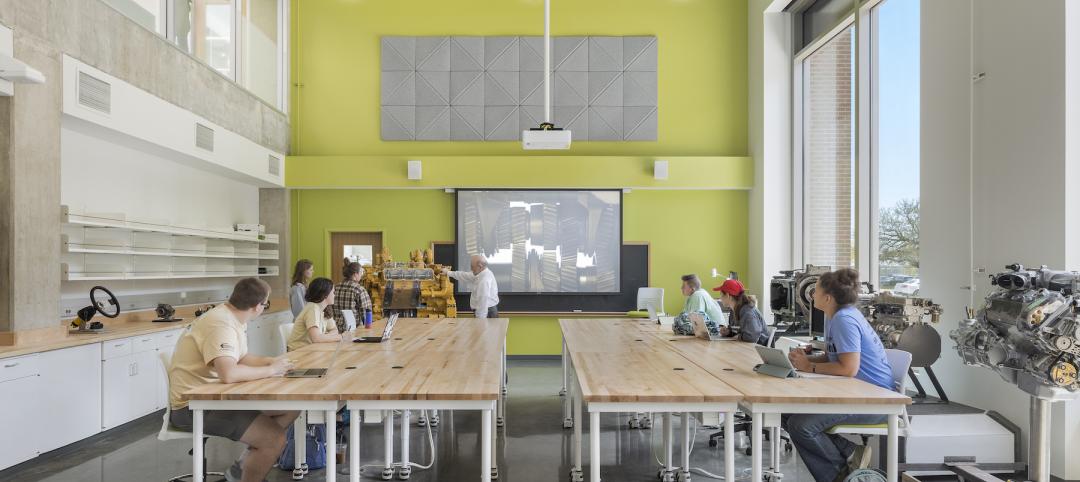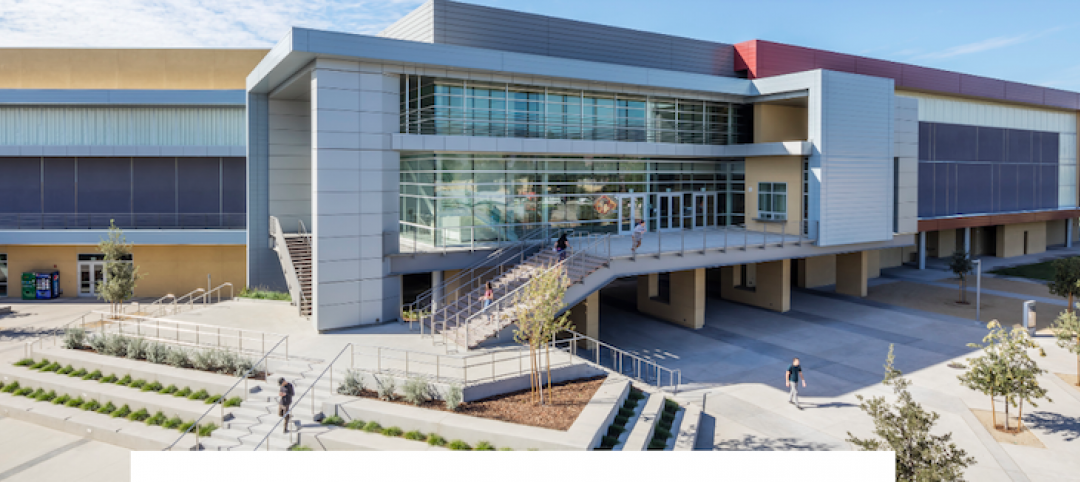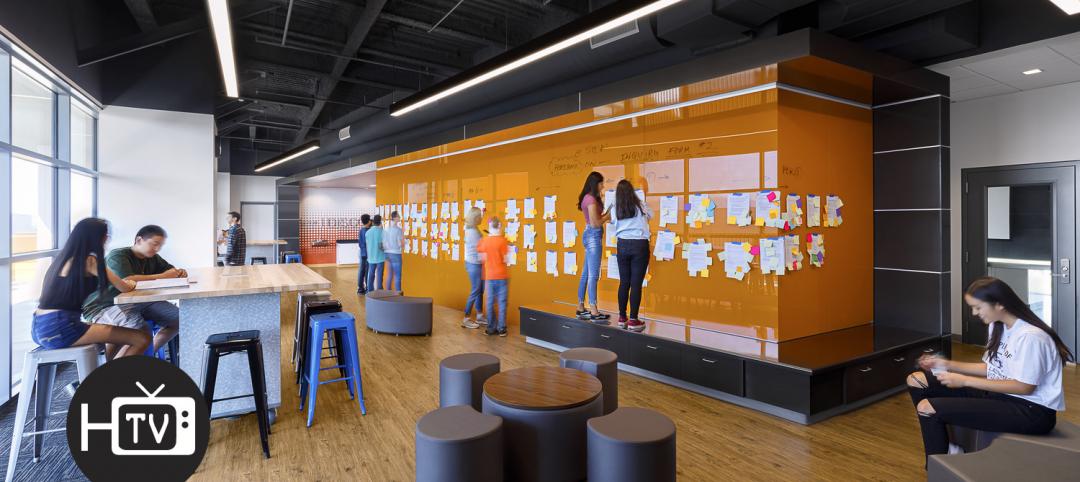South-West Middle School, located in Quincy, Mass., is a $58 million, 96,000-sf facility meant to “usher in the next generation of learning.”
The building features collaborative learning spaces, a media center, gymnasium, music and art rooms, administrative offices, a cafe, and an auditorium. STEM circulation zones encourage project-based learning and an open floor plan and glass walls create a synergetic environment. The glass walls are equipped with an electrified film that turns it opaque with the flip of a switch, making it impossible to see who is inside a classroom, an added safety measure in the event of a lockdown.
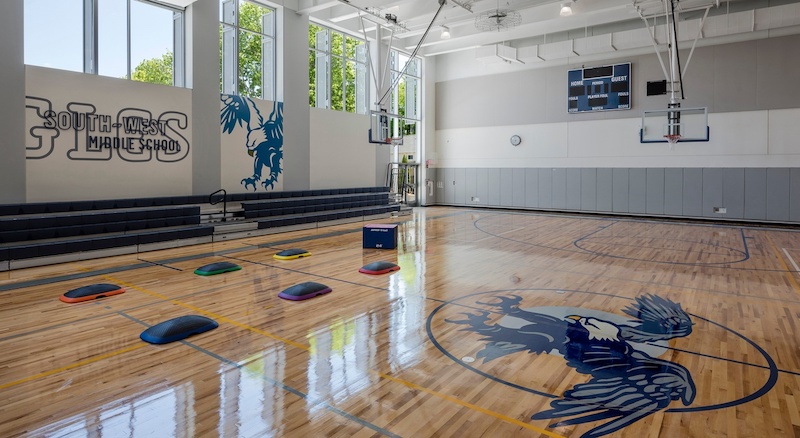
“Building off the growing trend of innovative and modernized schools, the light-filled spaces and technology-rich classrooms allow this new building to facilitate a high-quality of student engagement for the next generation of learning,” said Robert Murray, BOND (the project’s general contractor) President.
See Also: COX Architecture and Zaha Hadid Architects will design the Western Sydney Airport
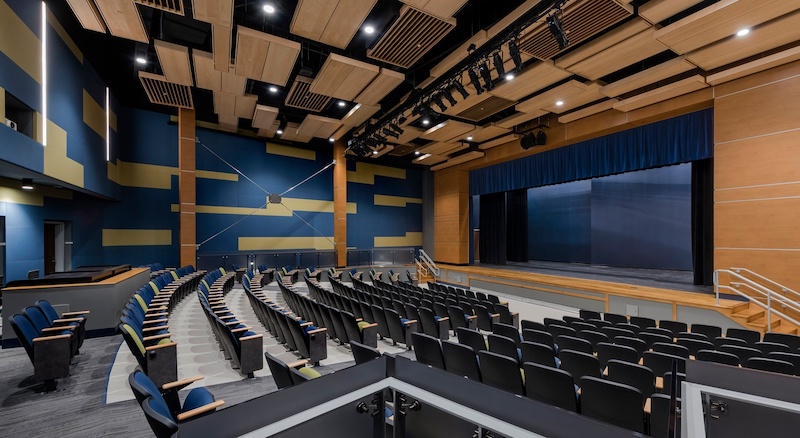
Because the new school is being built directly behind the old school, BOND used the opportunity to facilitate classroom learning sessions with South-West Middle School students to coincide with project milestones and STEM curriculum. A student-led Junior Building Committee met with BOND employees, went on hardhat tours of the site, wrote reports, and shared updates with their classmates and the school’s website throughout the construction process.
The school welcomed its first students for the 2019 school year.
Related Stories
| Sep 20, 2021
K-12 school design trends for 2021, with Wold's Vaughn Dierks
K-12 school design exert Vaughn Dierks discusses the latest K-12 school design trends and needs.
Education Facilities | Sep 7, 2021
High-rise public school set for construction in Boston
HMFH is designing the project.
Laboratories | Aug 31, 2021
Pandemic puts science and technology facilities at center stage
Expanding demand for labs and life science space is spurring new construction and improvements in existing buildings.
Giants 400 | Aug 30, 2021
2021 Giants 400 Report: Ranking the largest architecture, engineering, and construction firms in the U.S.
The 2021 Giants 400 Report includes more than 130 rankings across 25 building sectors and specialty categories.
Giants 400 | Aug 26, 2021
2021 University Giants: Top architecture, engineering, and construction firms in the higher education sector
Gensler, AECOM, Turner Construction, and CannonDesign head BD+C's rankings of the nation's largest university sector architecture, engineering, and construction firms, as reported in the 2021 Giants 400 Report.
Resiliency | Aug 19, 2021
White paper outlines cost-effective flood protection approaches for building owners
A new white paper from Walter P Moore offers an in-depth review of the flood protection process and proven approaches.
Education Facilities | Aug 2, 2021
How school architecture design addresses food insecurity on campus
Architects can help mitigate the effects of food insecurity in public schools and colleges around the country.
Wood | Jul 16, 2021
The future of mass timber construction, with Swinerton's Timberlab
In this exclusive for HorizonTV, BD+C's John Caulfield sat down with three Timberlab leaders to discuss the launch of the firm and what factors will lead to greater mass timber demand.
Daylighting Designs | Jul 9, 2021
New daylighting diffusers come in three shape options
Solatube introduces its newest technology innovation to its commercial product line, the OptiView Shaping Diffusers.
K-12 Schools | Jul 9, 2021
LPA Architects' STEM high school post-occupancy evaluation
LPA Architects conducted a post-occupancy evaluation, or POE, of the eSTEM Academy, a new high school specializing in health/medical and design/engineering Career Technical Education, in Eastvale, Calif. The POE helped LPA, the Riverside County Office of Education, and the Corona-Norco Unified School District gain a better understanding of which design innovations—such as movable walls, flex furniture, collaborative spaces, indoor-outdoor activity areas, and a student union—enhanced the education program, and how well students and teachers used these innovations.


